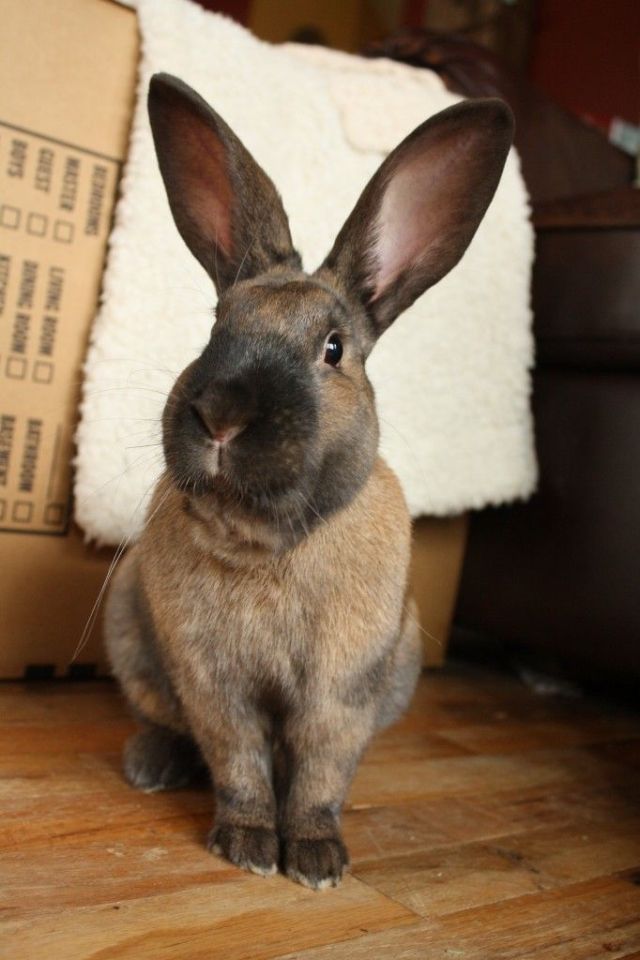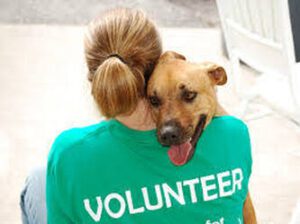Key Takeaways
-
Cinnamon Rabbits need at least one to two hours of exercise daily to stay healthy.
-
Providing a spacious and secure environment is essential for their physical and mental well-being.
-
Interactive toys like tunnels, chew toys, and puzzle feeders are highly recommended.
-
Supervised outdoor play is beneficial but requires safety precautions.
-
Regular social interaction helps in building a strong bond with your rabbit.
Cinnamon Rabbits Exercise Needs
Why Exercise is Crucial for Cinnamon Rabbits
Exercise is vital for Cinnamon Rabbits for several reasons. First, it helps maintain their physical health by preventing obesity and related issues like heart disease and arthritis. Regular exercise also promotes good digestion and prevents gastrointestinal stasis, a common and potentially deadly condition in rabbits.
Besides physical health, exercise is crucial for mental stimulation. Rabbits are intelligent creatures that need to explore, forage, and play. Without enough mental stimulation, they can become bored and develop destructive behaviors like chewing on furniture or digging excessively.
Most importantly, exercise helps to strengthen the bond between you and your rabbit. Interactive playtime allows you to understand your pet’s personality and needs better, making it easier to care for them effectively.

“The Cinnamon Rabbit Breed – Bunny …” from bunnybasicsblogs.home.blog and used with no modifications.
Creating Adequate Space for Exercise
Providing a spacious and secure environment is essential for your Cinnamon Rabbit’s well-being. A small cage or confined space can lead to stress and health problems. Ideally, your rabbit should have a large enclosure where they can move freely and explore.
Consider setting up a dedicated play area with plenty of room for hopping, running, and exploring. You can use baby gates or exercise pens to create a safe space indoors. Ensure the area is rabbit-proofed, removing any potential hazards like electrical cords or toxic plants.
Indoor vs. Outdoor Exercise Areas
When considering exercise areas for your rabbit, it’s important to weigh the benefits of both indoor and outdoor spaces. Indoor areas can provide a controlled environment, while outdoor spaces offer more room for exploration and natural behaviors. For more insights on adopting different rabbit breeds, you might want to check out this guide on American Chinchilla rabbits.
Both indoor and outdoor exercise areas have their pros and cons. Indoor spaces are easier to control and can be used year-round, regardless of weather conditions. You can set up tunnels, ramps, and other obstacles to create a stimulating environment.
Outdoor exercise areas offer more space and natural stimulation. However, they require careful planning and supervision to ensure your rabbit’s safety. Predators, toxic plants, disease and extreme weather conditions are some of the risks to consider.
Daily Exercise Needs
Recommended Exercise Duration
Cinnamon Rabbits need at least one to two hours of exercise daily. This can be broken up into shorter sessions throughout the day. The key is to ensure they have enough time to expend energy and explore their environment.
Regular exercise helps to keep your rabbit physically fit and mentally stimulated. It also reduces the risk of obesity and related health issues. Therefore, make it a daily routine to provide ample exercise opportunities for your pet.
Key Activities to Include
Incorporate a variety of activities to keep your rabbit engaged. Some key activities include:
-
Hopping and running: Provide ample space for your rabbit to move around freely.
-
Digging: Create a digging box filled with soil or shredded paper.
-
Foraging: Hide treats around their play area to encourage natural foraging behavior.
-
Interactive play: Use toys and tunnels to create an engaging environment.
By including these activities, you can ensure your rabbit gets the physical and mental stimulation they need. If you’re interested in other pets, consider reading about Abyssinian Guinea Pig adoption.
Interactive and Stimulating Toys
Providing engaging toys for Cinnamon Rabbits is essential to promote mental stimulation, physical activity, and overall well-being. The American Rabbit Breeders Association (ARBA) recommends interactive toys like tunnels, chew toys, and puzzle feeders to keep Cinnamon Rabbits entertained and healthy.
Types of Toys That Promote Physical Activity
Different types of toys can help keep your rabbit active. Here are some examples:
-
Tunnels: Tunnels provide opportunities for exercise, agility, and play, keeping the rabbit active and agile.
-
Chew toys: Chew toys help maintain dental health while providing mental stimulation.
-
Puzzle feeders: Puzzle feeders encourage foraging behavior and mental engagement.
Choosing suitable toys endorsed by ARBA ensures that the toys are safe, durable, and enriching for Cinnamon Rabbits.
DIY Toys vs. Store-Bought Options
When considering toys for your pet rabbit, you might wonder whether DIY toys or store-bought options are better. Each has its own advantages and disadvantages, and the best choice often depends on your rabbit’s specific needs and preferences.
You can choose between DIY toys and store-bought options. DIY toys are often inexpensive and can be made from household items like cardboard boxes, toilet paper rolls, and old towels. These can be used to create tunnels, hiding spots, and chew toys.
Store-bought toys are designed specifically for rabbits and often come with safety features. Look for toys that are made of non-toxic materials and are durable enough to withstand chewing and digging. For more information on adopting rabbits, check out our guide on American Chinchilla Rabbit Breed.
Example: “I made a simple tunnel for my Cinnamon Rabbit using a cardboard box. I cut out holes on each side and connected several boxes together. My rabbit loves running through the tunnel and hiding in it.”
Both DIY and store-bought toys have their benefits. The key is to provide a variety of toys to keep your rabbit engaged and stimulated.
DIY Toys vs. Store-Bought Options
You can choose between DIY toys and store-bought options for your Cinnamon Rabbit. DIY toys are often inexpensive and can be made from household items like cardboard boxes, toilet paper rolls, and old towels. These can be used to create tunnels, hiding spots, and chew toys.
Store-bought toys are designed specifically for rabbits and often come with safety features. Look for toys that are made of non-toxic materials and are durable enough to withstand chewing and digging.
Example: “I made a simple tunnel for my Cinnamon Rabbit using a cardboard box. I cut out holes on each side and connected several boxes together. My rabbit loves running through the tunnel and hiding in it.”
Both DIY and store-bought toys have their benefits. The key is to provide a variety of toys to keep your rabbit engaged and stimulated.
Engaging Games and Activities
Outdoor playtime is an excellent opportunity to engage your rabbit in fun games and activities. Here are some ideas:
-
Treasure Hunt: Hide treats around the play area and let your rabbit forage for them.
-
Obstacle Course: Set up an obstacle course with tunnels, ramps, and hurdles for your rabbit to navigate.
-
Interactive Toys: Use balls, chew toys, and puzzle feeders to keep your rabbit mentally stimulated.
These activities not only provide physical exercise but also engage your rabbit’s mind, keeping them happy and healthy.
Social Interaction
Social interaction is vital for the well-being of your Cinnamon Rabbit. They are social animals that thrive on companionship, whether it’s with humans or other rabbits. Regular interaction helps to build trust and strengthens the bond between you and your pet.
Besides that, social interaction can prevent loneliness and boredom, which can lead to behavioral issues. Therefore, it’s essential to make time for regular play and interaction with your rabbit.
Bonding with Your Rabbit
Bonding with your rabbit involves regular handling, grooming sessions, and positive interactions. Here are some tips to help you build a strong bond:
-
Gentle Handling: Handle your rabbit gently and support their body to make them feel secure.
-
Grooming: Regular grooming sessions help to build trust and keep your rabbit’s coat healthy.
-
Positive Reinforcement: Use treats and praise to reward good behavior and create positive associations.
By following these tips, you can establish a strong and loving bond with your rabbit.
Group Playtime for Multiple Rabbits
If you have more than one rabbit, group playtime can be a great way for them to socialize and exercise together. Here are some things to keep in mind:
-
Compatibility: Ensure that the rabbits are compatible and get along well.
-
Supervision: Always supervise group playtime to prevent any aggressive behavior.
-
Space: Provide enough space for all the rabbits to move around freely.
Group playtime can be a fun and enriching experience for your rabbits, promoting social bonds and physical activity.
Example: “I introduced my two Cinnamon Rabbits gradually, allowing them to interact through a barrier at first. Once they were comfortable with each other, I let them play together in a larger space. Now, they enjoy each other’s company and play together every day. If you are interested in adopting a rabbit, consider the American Chinchilla Rabbit breed.”
Benefits of Interactive Play with Humans
Interactive play with humans offers numerous benefits for your Cinnamon Rabbit. It helps to build trust, provides mental stimulation, and strengthens the bond between you and your pet. Here are some ways to engage in interactive play:
-
Training: Teach your rabbit simple tricks using positive reinforcement techniques.
-
Games: Play games like fetch or hide-and-seek to keep your rabbit entertained.
-
Exploration: Allow your rabbit to explore new environments under your supervision.
By engaging in interactive play, you can create a strong and lasting bond with your rabbit while keeping them mentally and physically stimulated.
Creating an Enriching Habitat
Creating an enriching habitat is essential for the well-being of your Cinnamon Rabbit. A well-designed enclosure provides ample space for exercise, mental stimulation, and relaxation. It should be safe, comfortable, and engaging to meet your rabbit’s needs.
Besides that, an enriching habitat helps to prevent boredom and behavioral issues, ensuring your rabbit remains happy and healthy. Therefore, it’s crucial to invest time and effort in creating the perfect living environment for your pet.
Enclosure Size and Setup
The size and setup of your rabbit’s enclosure play a significant role in their overall well-being. Here are some guidelines to follow:
-
Size: The enclosure should be large enough for your rabbit to move around freely. A minimum of 12 square feet is recommended for a single rabbit.
-
Bedding: Use soft, absorbent bedding like hay or straw to provide comfort and warmth.
-
Litter Box: Provide a litter box with rabbit-safe litter to encourage good hygiene habits.
By following these guidelines, you can create a comfortable and functional living space for your rabbit.
Incorporating Tunnels, Huts, and Platforms
Incorporating tunnels, huts, and platforms in your rabbit’s enclosure can enhance their living environment. These elements provide opportunities for exercise, exploration, and relaxation. For more information, check out this guide on American Chinchilla rabbits.
-
Tunnels: Use tunnels to create pathways for your rabbit to explore and navigate.
-
Huts: Provide small huts or hideouts where your rabbit can retreat and feel safe.
-
Platforms: Add platforms at different heights to encourage climbing and jumping.
By incorporating these elements, you can create a stimulating and enriching habitat for your rabbit.
Creating an enriching habitat is essential for the well-being of your Cinnamon Rabbit. A well-designed enclosure provides ample space for exercise, mental stimulation, and relaxation. It should be safe, comfortable, and engaging to meet your rabbit’s needs.
Besides that, an enriching habitat helps to prevent boredom and behavioral issues, ensuring your rabbit remains happy and healthy. Therefore, it’s crucial to invest time and effort in creating the perfect living environment for your pet. For more information on how to care for your rabbit, check out this article on Cinnamon Rabbits as Pets.
Enclosure Size and Setup
The size and setup of your rabbit’s enclosure play a significant role in their overall well-being. Here are some guidelines to follow:
For more detailed information, you can read about Cinnamon Rabbits and their specific needs.
-
Size: The enclosure should be large enough for your rabbit to move around freely. A minimum of 12 square feet is recommended for a single rabbit.
-
Bedding: Use soft, absorbent bedding like hay or straw to provide comfort and warmth.
-
Litter Box: Provide a litter box with rabbit-safe litter to encourage good hygiene habits.
By following these guidelines, you can create a comfortable and functional living space for your rabbit.
Incorporating Tunnels, Huts, and Platforms
Incorporating tunnels, huts, and platforms in your rabbit’s enclosure can enhance their living environment. These elements provide opportunities for exercise, exploration, and relaxation. Here are some ideas:
-
Tunnels: Use tunnels to create pathways for your rabbit to explore and navigate.
-
Huts: Provide small huts or hideouts where your rabbit can retreat and feel safe.
-
Platforms: Add platforms at different heights to encourage climbing and jumping.
By incorporating these elements, you can create a stimulating and enriching habitat for your rabbit. For more information on rabbit care, check out our guide on adopting Britannia Petite Polish rabbits.
How to Rotate Toys and Accessories
Rotating toys and accessories is a great way to keep your rabbit’s environment fresh and exciting. Regularly changing the items in their enclosure prevents boredom and encourages exploration. Here’s how you can do it:
-
Weekly Rotation: Swap out toys and accessories every week to keep things interesting.
-
Introduce New Items: Occasionally introduce new toys or hiding spots to add variety.
-
Observe Preferences: Pay attention to which toys your rabbit enjoys the most and rotate them more frequently.
By rotating toys and accessories, you can ensure your rabbit remains engaged and mentally stimulated.
Signs Your Rabbit Needs More Exercise
It’s essential to recognize the signs that your Cinnamon Rabbit may need more exercise. Lack of physical activity can lead to various health and behavioral issues. Here are some indicators to watch for:
Behavioral Indicators
Behavioral changes can be a sign that your rabbit needs more exercise. Look for the following:
-
Destructive Behavior: Chewing on furniture, digging excessively, or other destructive actions can indicate boredom and a lack of exercise.
-
Lethargy: If your rabbit seems less active or spends more time sleeping, they may need more physical activity.
-
Restlessness: Pacing or constant movement within their enclosure can be a sign of pent-up energy.
By recognizing these behavioral indicators, you can take steps to increase your rabbit’s exercise and improve their overall well-being.
Potential Health Issues from Inactivity
Inactivity can lead to several health issues in rabbits. Here are some potential problems:
One of the breeds that can be particularly affected is the American Chinchilla Rabbit, which requires regular exercise to maintain optimal health.
-
Obesity: Lack of exercise can lead to weight gain and obesity, which increases the risk of other health issues.
-
Gastrointestinal Stasis: Reduced physical activity can slow down digestion and lead to gastrointestinal stasis, a potentially life-threatening condition.
-
Muscle Weakness: Inadequate exercise can result in muscle weakness and reduced mobility.
Ensuring your rabbit gets enough exercise can help prevent these health issues and keep them healthy and happy.
Frequently Asked Questions (FAQ)
Here are some common questions about Cinnamon Rabbit exercise needs:
How much daily exercise does a Cinnamon rabbit need?
Cinnamon Rabbits need at least one to two hours of exercise daily. This can be broken up into shorter sessions throughout the day. The key is to ensure they have enough time to expend energy and explore their environment.
What are the best toys to keep my rabbit active?
Some of the best toys for keeping your rabbit active include tunnels, chew toys, and puzzle feeders. These toys promote physical activity and mental stimulation, helping to keep your rabbit engaged and healthy. If you’re considering adopting a rabbit, check out our guide on Britannia Petite Polish rabbits for more information.


